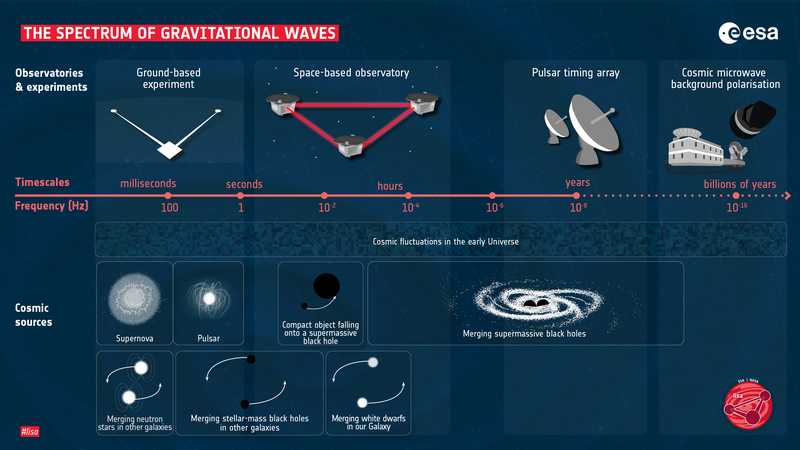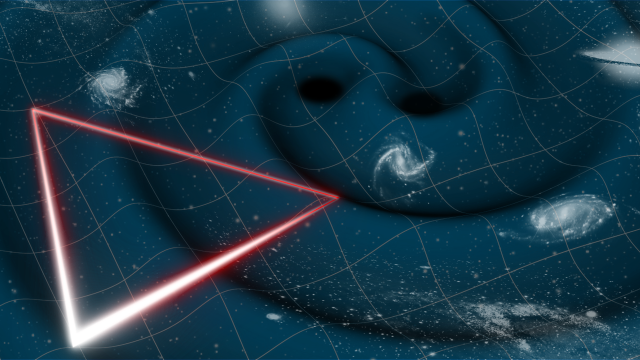Stay calm, everybody stay calm. But it’s finally happening: The European Space Agency is committing itself to the Laser Interferometer Space Antenna (LISA), a gravitational wave observatory that will study some of the universe’s most enigmatic phenomena.
On Thursday, LISA was formally adopted, meaning that ESA “recognises that the mission concept and technology are sufficiently advanced,” according to an agency release, and construction on the observatory can officially begin.
It’s only recently that humanity has been able to detect gravitational waves. Back in 2016, the phenomenon—predicted by Einstein—was observed for the first time thanks to a collaboration of scientists using the Laser Interferometer Gravitational wave Observatory (LIGO). LIGO recorded gravitational waves, or the extremely subtle ripples in spacetime generated by distant events like the merger of black holes.
Since then, plenty more gravitational wave detections have been made, as black holes and neutron stars across the cosmos have orbited one another, mutually attracted by gravity, their dance towards collision causing huge undulations in spacetime.
Last year, five collaborations independently announced data that they said likely emanated from supermassive black hole binaries and were a likely sign of the gravitational wave background: the constant, cumulative jumble of gravitational waves that stretch and squeeze the universe like waves in the cosmic ocean. That discovery was made using pulsar-timing arrays—basically, by timing the light from distant, rapidly spinning stars to determine whether spacetime had delayed or hastened their arrival.
The new project LISA is set to take this science to a whole new level. To put an interferometer in space would vastly reduce the noise encountered by ground-based instruments, and lengthening the arms of the observatory would allow scientists to collect data that is imperceptible on Earth.
“Thanks to the huge distance traveled by the laser signals on LISA, and the superb stability of its instrumentation, we will probe gravitational waves of lower frequencies than is possible on Earth, uncovering events of a different scale, all the way back to the dawn of time,” said Nora Lützgendorf, the lead project scientist for LISA, in an ESA release.
The gravitational wave discovery announced in 2016 came from an enormous interferometer that straddles the United States, with one set of arms in Washington and another set in Louisiana. By measuring the slightest changes in the distances that laser light in the interferometers had to travel, the team determined that spacetime itself had squashed and stretched as gravitational ripples from a distant cosmic collision passed through Earth.

LISA will consist of three spacecraft, orbiting the Sun in an “exquisitely accurate equilateral triangle” formation. Each of LISA’s arms—unencumbered by terrestrial obstructions like trees and power lines and issues of land ownership—will be 1.5 million miles long. LISA’s hardware was tested by the LISA Pathfinder mission, which launched in 2015. “To expand the frontier of gravitational studies we must go to space,” Lützgendorf said.
Chief among LISA’s targets will be the gravitational waves emitted by the collisions of black holes at the centre of galaxies. But the observatory will also be charged with mergers of compact objects like white dwarfs and neutron stars, according to ESA.
LISA’s launch date is expected for 2035, about 20 years after ESA first stated the observatory was a priority. Work on the observatory will begin in January 2025.
